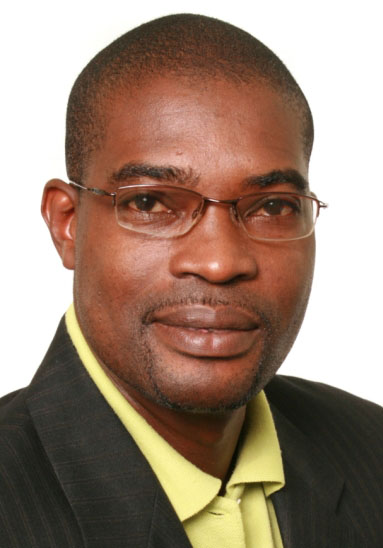Dutch multinational geotechnical and geoscience company Fugro, will soon begin mapping of the ocean floor, even as government forges ahead with plans to bring natural gas from ExxonMobil’s offshore operations, onshore by 2022.
“It is all on train and at the moment some seismic mapping of the ocean floor is being done,” Minister of Public Infrastructure David Patterson told Sunday Stabroek.
A timeframe for the work to be done was not given but Patterson was upbeat that the project is going as planned.
This newspaper understands that Fugro will be carrying out the works in association with its local partner, Ground Structures Engineering.

“Think of it as the same as building a house. You would want to know the type of soil so you can plan your foundation and all those things. The ocean floor is not level and out there we don’t know anything about it. You would want to know the contour; what is the topography and that sort of thing,” a source close to the process explained.
In July of this year, ExxonMobil’s Country Representative Rod Henson said that while the company believes it would be more financially beneficial to Guyana if all the natural gas was used for well injection purposes offshore, government has been in discussions with the company to have some of the gas brought onshore for domestic use.
Given Guyana’s “unique” case where the cost of electricity from its current use of fossil fuels is “very high,” Henson noted, the company is working with government to bring a cleaner and cheaper alternative for this country’s domestic use. The amounts required, he said, would be around 30 to 35 million cubic feet of natural gas.
As a result, he explained that discussions are ongoing towards this cause and if an agreement is reached soon, Guyana could see natural gas being used in its energy mix by 2022. Pumping of oil from the Liza-1 well is expected to begin in 2020.
“I think our current view is if we can do it in a timely fashion, get the Environmental Impact Assessment and what’s not, we are likely looking at 2022, 2023 timeframe, plus or minus,” he told the Parliamentary Sectoral Committee on Natural Resources.
His views were echoed by Patterson, who told this newspaper that even as the negotiations continue, government was preparing for the cleaner and cheaper alternative to heavy fuels, while it simultaneously puts mechanisms in place to one day convert to renewable energy sources.
Only recently, Head of the Department of Energy Dr. Mark Bynoe, said that government was conducting a gas to power feasibility analysis as it forms a holistic plan for this country’s energy needs.
“We are also conducting a gas to power feasibility analysis, to not only determine where the gas pipelines should be landed but to also…place it within the context of a much broader industrial park as well as pushing a strategic framework for the evolution of our country’s development,” Bynoe stated.
Having already identified Woodlands, Mahaica, East Coast Demerara as the location where the pipes will land, government has catered for part of a World Bank US$20 million loan to be used to research transporting natural gas onshore for local energy needs.
“We have had desktop studies, but we now have to go further and actually work out the actual generation aspects onshore; what equipment for GPL (Guyana Power and Light) for example…there is a lot of work to get done. We have done an identification of the location, which is at Woodlands on the East Coast of Demerara but the work now in terms of for example, the pipeline—the width of the pipeline, say if 12 inches as opposed to 14 inches? Where will it land? Which company is going to take it there? Is it General Electric? Is it Wartsila? Is it GPL by itself? These are decisions that have to be made and they can’t be made in a vacuum, so we need an in-depth study,” Minister of Natural Resources Raphael Trotman told reporters after meeting with World Bank Representatives in May of this year.
One of the “desktop studies” referred to by Trotman was undertaken last year by Mexican energy analysis company Energy Narrative at a cost of US$70,000.
Patterson said that the studies had confirmed it was feasible to bring the gas onshore and that it would work out to about US 10 cents per megawatt hour.
“It has been confirmed that it is feasible. It has been confirmed that it will be an absolute benefit to the country, it has been confirmed, and I can say this, I will go out on a limb and say—the numbers are all sub US 10 cents per megawatt hour,” Patterson told attendees at a GPL event last April.






